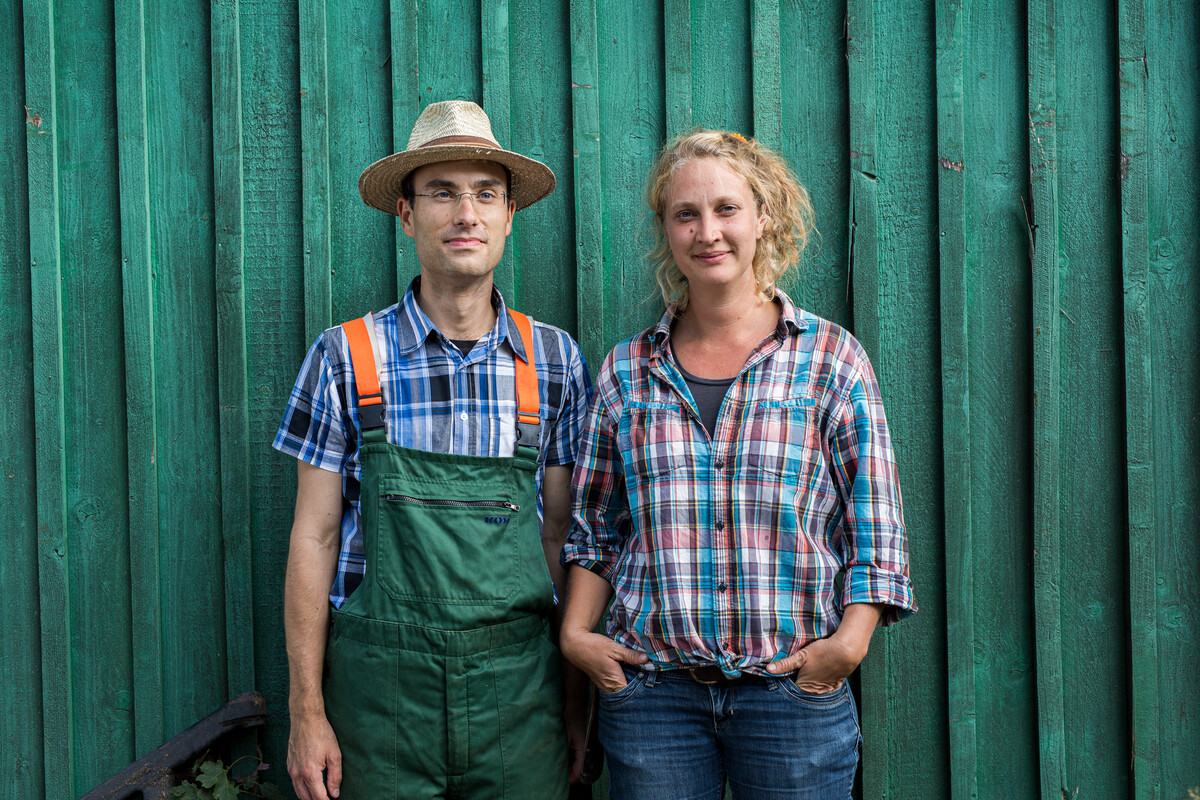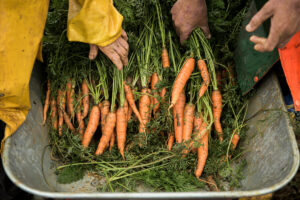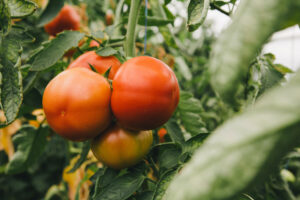Our precious planet
Climate Change is one of the biggest challenges we as a species face today. Unless we drastically change the way we live, eat and manage our precious resources, the future is looking bleak.
Role of Farming
One of the biggest contributors to greenhouse gas emissions, which affect Climate Change, is industrial farming. According to the latest study, food systems alone are responsible for one third of global greenhouse gas (GHG) emissions.[1] Not only are the activities from agriculture and land use in general contributing to GHG emissions, but also supply chains have an impact carrying the produce from the fields to our forks. Conversely it is also one of the sectors most affected by Climate Change. Rising temperatures, water scarcity and soil degradation to name a few. Farmers must face the consequences of droughts and exceptionally heavy rainfall increasing the challenge of farming.
[1] https://www.nature.com/articles/s43016-021-00225-9
Thus far, most efforts have been focused on addressing the outcomes of climate change rather than the cause. For example, focusing on how to capture methane gas, rather than producing less of it. Or creating even more efficiency in production, rather than increasing the quality over the quantity.
With climate-friendly farming practices, agriculture can actively contribute to mitigating climate change and even reduce CO2 emissions.
We cannot solve our problems with the same thinking we used when we created them.
Albert Einstein, scientist and philosopher
Climate action in agriculture
We must change the way we farm if we are going to have any impact on the trajectory of Climate Change. With climate-friendly farming practices, agriculture can actively contribute to mitigating climate change and even reduce CO2 emissions. This is where biodynamic and organic farming methods have a huge contribution to make.
Biodynamic and organic farming offer many advantages to counter climate change. On the one hand, biodynamic and organic farmers are less vulnerable to the possible effects of climate change; on the other hand, they also manage to save money.
Climate protection
In a meta-study conducted in 2019, the Thünen Institute of the German Federal Government concludes that organic farming offers advantages in terms of climate protection compared to conventional farming in terms of area. The system-related differences between the two forms of farming result primarily in three positive outcomes for organic farming:
- A higher carbon content in the soil due to improved carbon (C) storage: on average 256 kg C per ha and year more is stored than in conventionally managed soils
- Lower nitrous oxide (N2O) emissions: on average 24 % less N2O emissions per ha and year
- Lower methane (CH4) emissions: on average 18 % more CH₄ uptake in organic soils
According to the current state of science, biodynamic and organic farming practices can therefore make an important contribution to climate protection. In many areas, it is significantly more climate-friendly than conventional agriculture.
Climate adaptation
Important properties of the topsoil that contribute to erosion prevention and flood protection showed comparable or better values in organic compared to conventional farming. As higher infiltration reduces soil erosion and surface runoff, these values were also lower on average (median) under organic management (-22 % and -26 % respectively). This was mainly due to clover and lucerne-grass cultivation.
With regard to the selected indicators for assessing performance in climate adaptation (i.e. erosion and flood control), organic farming practices showed clear advantages in terms of precaution at the level of individual plots (Corg content, aggregate stability, infiltration), clearly expectable advantages at the crop rotation level (C-factor of the general soil erosion equation) and tendential advantages at the landscape level (surface runoff, soil erosion).
In 2019, the Sekem initiative launched the Greening the Desert project. The objective is to reclaim about 1,000 hectares of desert land and turn it into fertile land again by recultivating the hostile land through biodynamic agriculture. The reclaimed land will be able to meet the food needs of around 2,000 people, and the biodynamic soil development and planting of 10,000 trees will also bind more than 975 tonnes of CO2 annually. A great success in a country that is itself affected by extreme drought, desertification, and rising seas showing the way forward to climate mitigation and adaptation.
Humus as a stabiliser
Biodynamic farmers enhance soil fertility and the building up of humus with manure, compost and biodynamic preparations.
One of the most important factors for the advantages of biodynamic farming is the increased humus build-up. The more diverse crop rotations on biodynamic farms are the basis for this effect: Crops such as clover grass promote the build-up of humus, where CO₂ is stored in the soil and cannot have a climate-damaging effect in the atmosphere. Crop rotations tend to contain fewer root crops, which have a strong humus-depleting effect. In addition, the use of organic fertilisers such as manure or compost contributes to stabilising the humus content in the soil.
Organic cattle farming
On average, keeping cattle in biodynamic and organic farming systems is significantly less damaging to the climate than in conventional farming. It can even actively contribute to climate protection.
As far as the amount of greenhouse gas emissions is concerned, it is lower for organically kept cows than for their conventional counterparts – both in terms of per kilogramme of milk and in terms of area. If the keeping of the animals on pasture comes into play, the difference is even more pronounced: if we look at the aspect of fertilisation, we see that conventional, pasture less systems have almost three times as high an emission of greenhouse gases compared to organic pasture systems.
In biodynamic farming the manure of cattle is even efficiently used for soil fertility. Farms work therefore in a loop which enhances climate mitigation.
Land use change as a climate killer
The conversion of pasture or forest land to cropland is known as land use change. This practice is widespread, especially in South America. They produce fodder for export to North America and Europe. This always results in severe loss of carbon in the soil. As early as 2009, the FAO concluded that 18% of annual greenhouse gas emissions worldwide can be attributed to land use change. This clearly shows that feeding non-indigenous concentrated feed to animals is much more harmful than feeding animals with indigenous feed or pasture.
Biodynamic farmers feed their animals with their own farm land or from fodder produced on surrounding biodynamic farms. Therefore, the adverse effects of land use change necessary for fodder in industrial farming do not apply when it comes to biodynamic farming.

Farmers for Future
Inspired by the Fridays for Future movement Demeter Germany co-initiated the Farmers for Future initiative.
The movement requests:
- Tax CO2 emissions
- Energy-efficient and sustainable energy supply and mobility
- No factory farming – Fewer animals in total, but species-appropriate husbandry with open-air runs
- Build up humus – Binding CO2 in the soil by building up fertile humus
- Distribute funds better – worldwide policy must promote sustainable and animal-friendly agriculture
- Expand organic farming
- Sustainable consumption – Promote sustainable consumption and stop food waste
- Organic for all – More climate-friendly healthy food, for example through organic food in public catering facilities.



